Pwned and almost game over, Nintendo fights back again and again
The tumultuous story of the company behind Super Mario and Wii has as many ups and downs as its games. Inside the Storm looks at how it survived them.
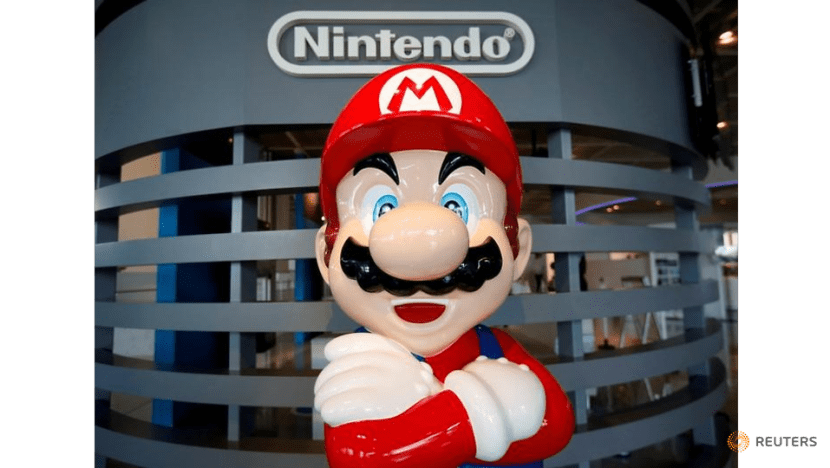
Nintendo's Mario at the company showroom in Tokyo, Japan, (Photo: Reuters)
JAPAN: Isao Yamazaki is no ordinary Nintendo fan.
His apartment in Tokyo is packed with over 7,000 Nintendo products ranging from playing cards to game consoles, and even a Nintendo baby stroller made in the 1970s.
This web developer, who authored the book Nintendo: The Complete Guide, is one of the most knowledgeable Nintendo collectors around. “With the amount of money I've spent over the past few decades, I could have probably bought a house,” he said.
But he reckons it’s not easy being a Nintendo fan – the 128-year-old Japanese company firm had suffered a series of missteps that nearly sent it over the edge several times in its history.
The story of how one of the world's largest video game companies managed to pick itself up time and again is told a recent episode of Inside the Storm: Back from the Brink, a series about legacy companies that have rebuilt themselves from near-bankruptcy.
WATCH: The roller-coaster story in a nutshell (2:40)
ENTERING AT THE WORST TIME
Nintendo first started out as a manufacturer of playing cards, before branching into the hotel, taxi and even vacuum cleaning business in the 1960s - all of which failed spectacularly.
The company then boldly ventured into the video games industry in 1983 - just when the market was entering a massive recession due to a saturation of game consoles and the growing popularity of home computers. It was so bad that US market leader Atari had ended up burying most of its discarded worthless games and hardware in the landfills of New Mexico.
It was against that backdrop that, in 1983, Nintendo released its first video game console called the Nintendo Entertainment System (NES). Some credited it with saving the entire home video game industry.
NES was wildly successful – it sold two million units within a year and catapulted the company into pole position, remaining in production right up to 2003.
TOYMAKER WAS NINTENDO'S CREATIVE FORCE
Its success was attributed to a relatively unknown toy builder called Yoko Gunpei, whom Nintendo tasked to lead their foray into the video games industry, which did not exist in Japan at the time.
Right off the bat, with his unusual background, he saw things differently than the existing horde of video-game creators. “He was never competing with the industry that existed. He didn't care. That's one of the things that always made Nintendo think differently,” said games developer James Barnard, who runs his own studio in Singapore.
Mr Gunpei created new products using cheap, well-established technology that appealed to both children and adults. He was the man behind many of Nintendo's initial hits - from creating Game & Watch, to helping to bring to life Shigeru Miyamoto's iconic creations Donkey Kong and Mario.
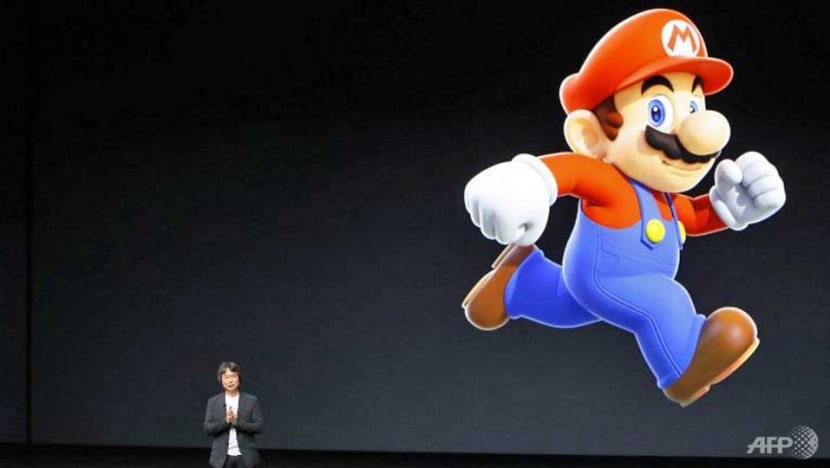
Shigeru Miyamoto, creator of Super Mario, at an Apple launch event in 2016. (Photo: Getty Images/AFP)
Said collector Mr Yamazaki: “Compared with others, Nintendo's graphics were beautiful. And while other consoles used joy sticks, Nintendo controllers had the cross key, which made it easy to play with and very family-friendly. People became obsessed with them.”
As the market leader worldwide in video games in the 1980s, the company enjoyed a 90 per cent dominance over its main rival, Sega.
But then, the US gaming market started to see a resurgence, with games that became more cutting edge, had better graphics and complex gameplay, said Mr Yamazaki.
VIRTUAL REALITY FAILURE
Having significantly lost market share, Nintendo launched the world’s first virtual reality game console called Virtual Boy in 1995 - the brainchild of Mr Gunpei.
Unfortunately, it went down as one of his biggest failures, and Nintendo’s biggest commercial flop to date.
Professor Andrew Delios, head of the Department of Strategy & Policy at NUS Business School, said that virtual reality then simply made consumers nauseous and uncomfortable.
“I think it was a technologically inferior product that they pushed on the consumer base under the idea that the novelty might drive the sales. But no amount of good marketing was going to overcome the liabilities from having a technologically inferior product,” he said.
Virtual Boy was pulled off the market just 18 months after its launch. And to make matters worse, Mr Gunpei died in a car crash in 1997 – with his death the company lost its key creative force.
ANOTHER HUGE GAMBLE
Problems were brewing within the organisation, which was accused of not listening to the opinions of its young ones.
Its games received bad reviews, and competitors such as Sony’s PlayStation and Microsoft’s Xbox took over market domination with their new generation of gaming consoles that had hard drives, Blu-ray DVD-players, as well as 3D graphics and multi-player internet connections.
It was then that the creative team at Nintendo took a huge gamble. Four years was invested into research on interactive game play.
The result: An unveiling of the Wii and its revolutionary motion-control gameplay over 2005 and 2006.
It went back to the company’s core philosophy, as embodied by Mr Gunpei, of appealing to both children and adults who could play together. And with no other major console targeting the family market, the Wii was unchallenged, with more than 100 million units sold in less than six years.
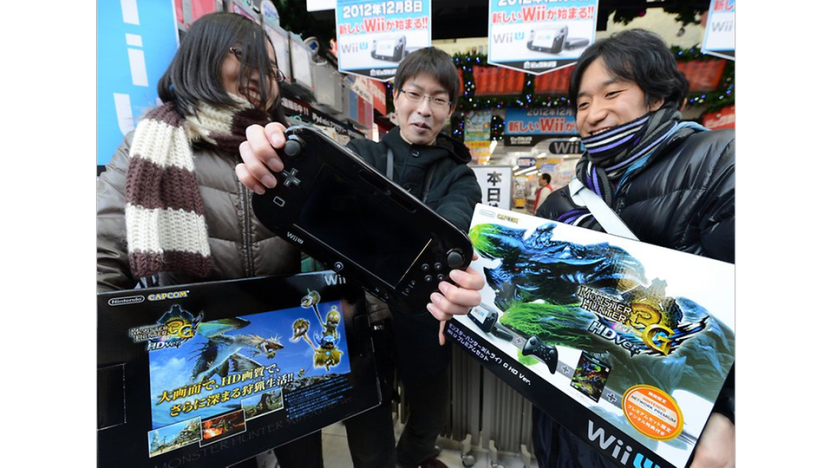
Nintendo releasing its new Wii U game console. (Photo: AFP)
But success was short-lived once again.
It took both Microsoft and Sony almost five years to come up with a similar product to rival Nintendo’s dominance, but when they did, Nintendo's market share began to slide again.
Its new tablet for gaming, called the Wii U which was launched in 2012, did not help. More powerful and multifunctional tablets emerged, leaving Nintendo behind.
POKEMON GO AND THE RETURN OF SUPER MARIO
But then, Nintendo’s stable of characters started moving onto mobile.
Nintendo’s next lifeline came in the form of the overwhelmingly successful Pokemon Go - which was, and still is, the fastest mobile game ever to reach US$500 million (S$710m) in revenue.
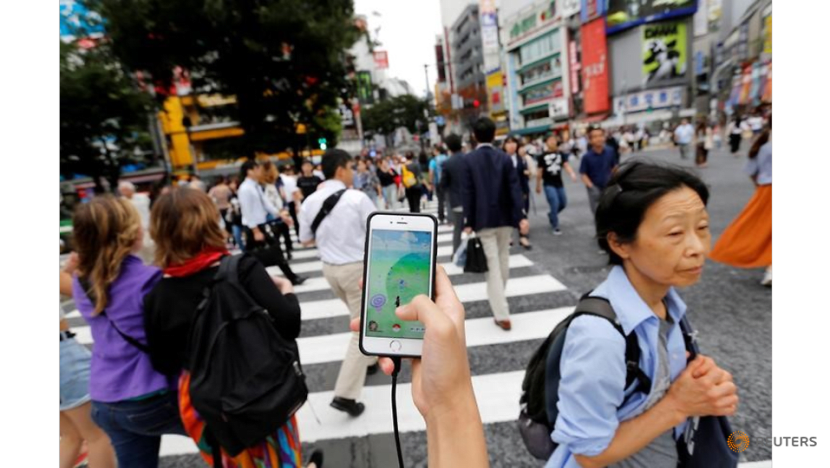
Nintendo has a 32-per-cent stake in The Pokemon Company, the business that markets and licenses the Pokemon franchise to outside developers. And these days, observers note, it seems that cashing in on its intellectual property is a strategy that seems to be paying off well for Nintendo.
Take Super Mario Run, which - 35 years after the character’s creation - was launched on the Apple App Store in December 2016. It reportedly became the fastest-growing app in iOS history, downloaded more than 50 million times in its first week of release.
Nintendo is also gearing up to re-enter the console wars with a brand-new device, the Nintendo Switch, and is in talks with Universal Studios to open theme parks.
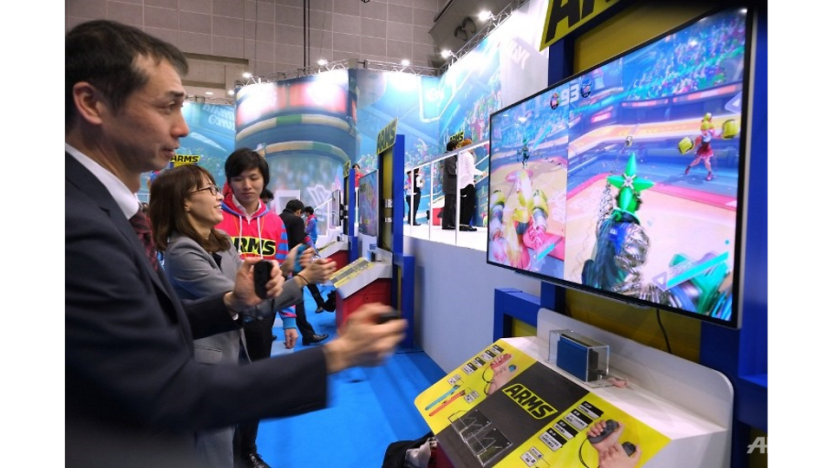
Users try out Nintendo's new video game console Switch (Photo: AFP)
Again, the company seems to be riding yet another crest of the wave. But can it stay there, and for how long?
Prof Delios warned of challenging times ahead, as modern gamers today have little loyalty and are extremely finicky. “They (gamers) have no need for loyalty because they don't need much to invest in a game - they have in-game apps that are US$1, US$5, and many of the subsequent purchases are free,” he said.
“Nintendo is operating in this market where consumer choice is massive. This is new competition unlike all the competition earlier.”
Watch the story of Nintendo on Inside the Storm: Back from the Brink here












